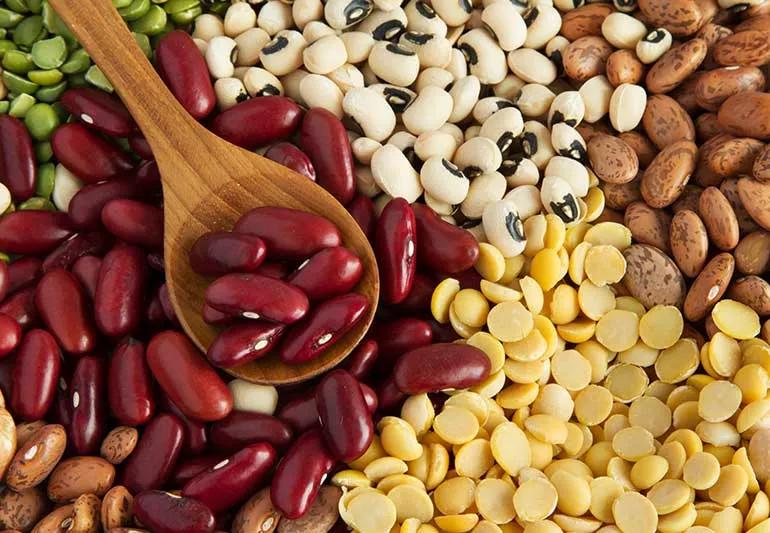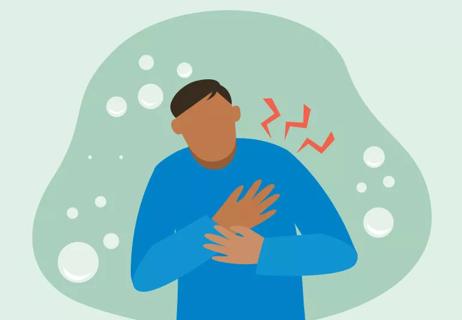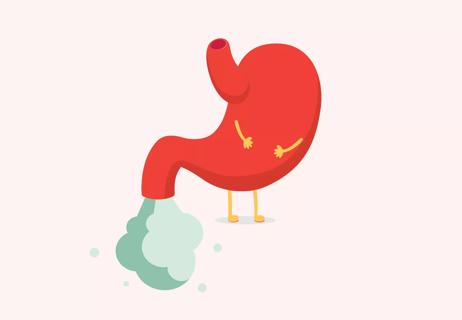Fiber gets credit, but don’t let the byproduct keep you from enjoying beans

Black beans. Green beans. Kidney beans. Lentils. Pintos. Garbanzos.
Advertisement
Cleveland Clinic is a non-profit academic medical center. Advertising on our site helps support our mission. We do not endorse non-Cleveland Clinic products or services. Policy
Roast them, grill them, mash them or put them in a stew — however you cook them, beans and legumes are a vital part of many healthy diets, including the Mediterranean diet, which protects against heart disease, dementia, cancer and other chronic illnesses.
The issue with beans is that digesting their sugars often creates a fragrant, musical byproduct: Gas (or flatulence).
Is there any way to avoid excessive farting and unpleasant odor?
Integrative medicine physician Irina Todorov, MD, shares the importance of beans and how to best avoid their unfortunate side effects.
Beans are just one example of many high-fiber foods. When you eat a ton of fiber, you increase your chances of bloating, stomach pain and gas.
“Beans, legumes and soy each have 6 to 8 grams of fiber per half-cup,” says Dr. Todorov.
Fiber is particularly difficult to digest compared to some other foods. If you suddenly start eating 1 cup of beans per day, that’s a big increase, and it may take some time for your body to get used to your new fiber intake. But as you continue to consume legumes regularly, your gas levels will eventually return to normal.
The bacteria in your gut have an important role in breaking down the foods you eat, including hard-to-digest foods like fiber. Several byproducts are created in this process that heavily influence your gut health. Raffinose is one particularly difficult carbohydrate to digest, and you can find it in beans, as well as other foods like cabbage, broccoli, Brussels sprouts and asparagus. Studies have shown raffinose may have beneficial effects on the bacteria living in your gut, but when raffinose is broken down, several gases are produced which cause flatulence and bloating.
Advertisement
A 2011 review of three studies found that different legumes may cause different amounts of gas. Researchers compared the flatulence people reported after eight weeks of eating one-half cup of these foods in various combinations:
In the first week, black-eyed peas caused less flatulence than pinto beans or baked beans. But after three to four weeks, flatulence levels for all the beans returned to normal as people adjusted to the increased fiber. The control group, who ate only baked carrots, also reported flatulence — probably because carrots contain fiber, too.
But Dr. Todorov notes that 6% to 12% of the people saw no decrease in gas with any bean, and more up-to-date studies are needed to determine the exact difference between legumes and their gas byproducts. Plus, people may develop certain sensitivities to different kinds of beans. “People vary in their response to different legumes,” she says. “So if one type of bean gives you problems, switch to another type to see if it gives you less gas.”
If the risk of farting dissuades you from going to town on beans, there are some things you can do to reduce the amount of flatulence you experience.
“I always soak my beans overnight, throw out the leftover unabsorbed water, then fill the pot with fresh water and start the cooking process,” says Dr. Todorov.
The advice comes directly from Dr. Todorov’s grandmother, but studies have also shown that soaking beans for at least 16 hours can reduce the amount of gas produced by digestion.
Perhaps your family has passed on a special method of cooking beans from one generation to the next. For instance, maybe you were taught to add one of these herbs to boiling beans to make them more digestible:
“There is no harm in trying any of these methods,” says Dr. Todorov. “These herbs are part of the Mediterranean diet. They will add great taste to your dish and some of them are used to help digestion.”
It’s also common in some Asian cultures to add a dried piece of kombu seaweed to beans as they boil to make them more digestible. You remove the kombu once the beans are done.
“Kombu seaweed can be found in most Asian food and health food stores,” Dr. Todorov adds.
Passing gas can be awkward, and at times, a little embarrassing, but if you’re experiencing painful cramps, bloating or stomach pain, there are some over-the-counter medications that can help. Simethicone is most often used to reduce bloating, discomfort and pain, and you can find it in a number of brands, including Gas-X™, Alka-Seltzer™ and Mylanta™.
Advertisement
“A small study using oral over-the-counter remedies proved to be effective, at least in some patients,” says Dr. Todorov. “But these medications can also decrease the absorption of some prescription medications.”
For example, simethicone can decrease the absorption of thyroid medications like levothyroxine. If you take thyroid medications, you should take them at least four hours before or after you take products that contain simethicone.
But “you should talk to your healthcare provider or pharmacist about possible drug interactions before starting any over-the-counter gas-minimizing medications,” says Dr. Todorov.
Don’t let flatulence keep you from enjoying beans in soups, stews, chili and many other dishes popular. A comprehensive exploration of global food-based dietary guidelines shows legumes are classified differently in various parts of the world, but they all emphasize nutritional benefits, including potential anti-inflammatory benefits. That makes legumes an ever more important part of your daily nutritional intake.
And while you may find some beans easier to digest than others, once these “musical fruits” become part of your diet, you shouldn’t have to worry about gas.
“Find out which beans suit you best, and keep eating them,” encourages Dr. Todorov.
Advertisement
Learn more about our editorial process.
Advertisement

Frequent burping can be many things — but likely not cancer

What, when and how much you eat are just a few factors that can impact nighttime gas levels

When it can’t pass down south, gas can definitely travel — and get trapped — up north

Excessive flatulence could indicate a digestive issue

Certain foods, medications or even illness could be behind the stink

This starchy root vegetable is a staple in many global cuisines — but it has to be prepared correctly, or it can cause serious concerns

These delicate green sprouts can give you an extra dose of vitamin K and other nutrients — but they’re not safe for everyone

Start having sex about 72 hours before ovulation, then at least every other day during your fertile window

Attachment theory suggests that your earliest relationships shape connections throughout your life

It isn’t a recognized mental health disorder, but research shows that problematic social media use can negatively affect your mental health, self-esteem and sleep